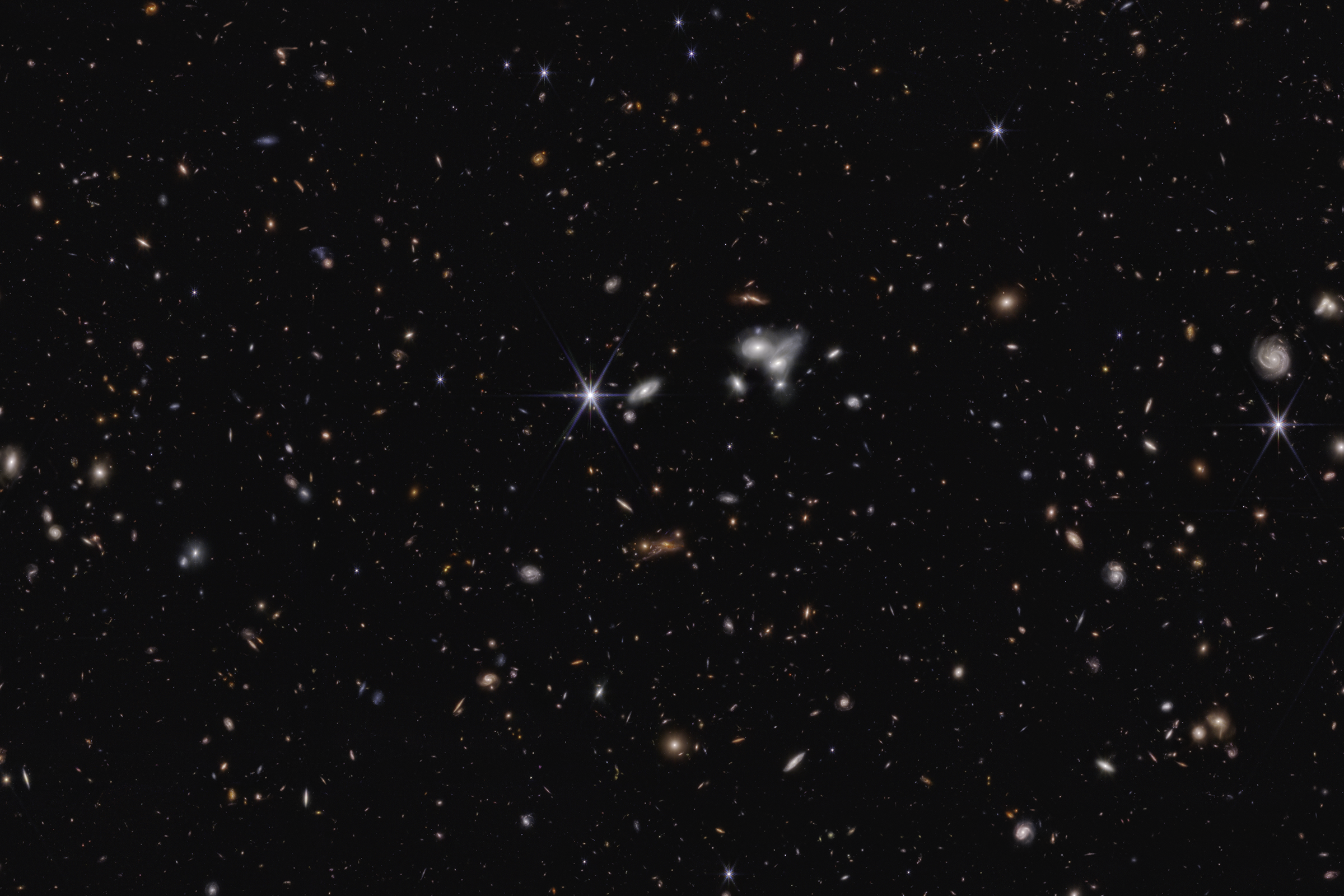James Webb Space Telescope detects ‘most distant active supermassive black hole’
Researchers also observed two more, smaller black holes.

Your support helps us to tell the story
From reproductive rights to climate change to Big Tech, The Independent is on the ground when the story is developing. Whether it's investigating the financials of Elon Musk's pro-Trump PAC or producing our latest documentary, 'The A Word', which shines a light on the American women fighting for reproductive rights, we know how important it is to parse out the facts from the messaging.
At such a critical moment in US history, we need reporters on the ground. Your donation allows us to keep sending journalists to speak to both sides of the story.
The Independent is trusted by Americans across the entire political spectrum. And unlike many other quality news outlets, we choose not to lock Americans out of our reporting and analysis with paywalls. We believe quality journalism should be available to everyone, paid for by those who can afford it.
Your support makes all the difference.Researchers have discovered the most distant active supermassive black hole to date with the James Webb Space Telescope (JWST).
The CEERS 1019 galaxy existed about 570 million years after the Big Bang, and its black hole is less massive than any other yet identified in the early universe.
Researchers observed two more black holes that are on the smaller side and existed 1 billion and 1.1 billion years after the Big Bang.
JWST also identified 11 galaxies that existed when the universe was 470 million to 675 million years old.
Looking at this distant object with this telescope is a lot like looking at data from black holes that exist in galaxies near our own
The evidence was provided by JWST’s Cosmic Evolution Early Release Science (CEERS) Survey, led by Steven Finkelstein, a professor of astronomy at the University of Texas at Austin.
Rebecca Larson, a recent PhD graduate at UT Austin, who led the study, said: “Looking at this distant object with this telescope is a lot like looking at data from black holes that exist in galaxies near our own.
“There are so many spectral lines to analyse.”
The researchers suggest CEERS 1019 is notable not only for how long ago it existed, but also how relatively little its black hole weighs.
It clocks in around nine million solar masses, far less than other black holes that existed in the early universe and were detected by other telescopes.
Those black holes typically contain more than a billion times the mass of the sun – and because they are much brighter, they are easier to detect.
The black hole within CEERS 1019 is more like the black hole at the centre of our Milky Way galaxy, which is 4.6 million times the mass of the sun.
This black hole existed so much earlier that it is difficult to explain how it formed so soon after the universe began.
Researchers were also able to pinpoint how much gas the black hole is ingesting to determine its galaxy’s star-formation rate.
They found it is ingesting as much gas as it can while also churning out new stars.
CEERS team member Jeyhan Kartaltepe, an associate professor of astronomy at the Rochester Institute of Technology in New York, said: “We’re not used to seeing so much structure in images at these distances.
“A galaxy merger could be partly responsible for fuelling the activity in this galaxy’s black hole, and that could also lead to increased star formation.”
Speaking about the discovery of the other two black holes, team member Dale Kocevski, of Colby College in Waterville, Maine, said: “The central black hole is visible, but the presence of dust suggests it might lie within a galaxy that is also furiously pumping out stars.
“Researchers have long known that there must be lower mass black holes in the early universe. Webb is the first observatory that can capture them so clearly.
“Now we think that lower mass black holes might be all over the place, waiting to be discovered.”
The findings are published in the The Astrophysical Journal Letters.